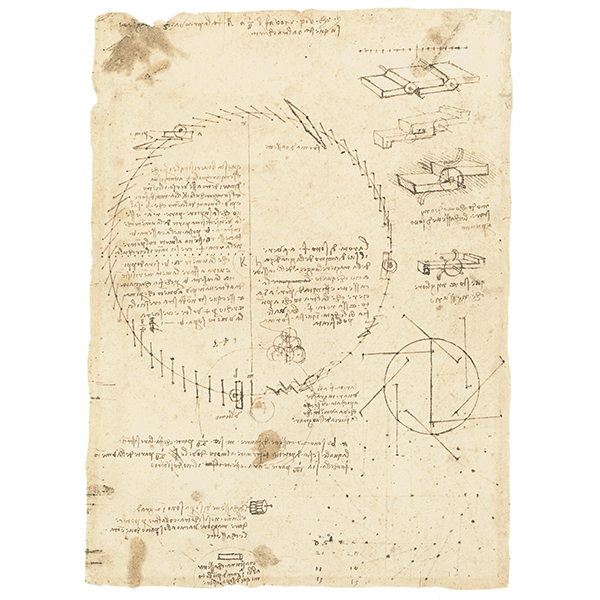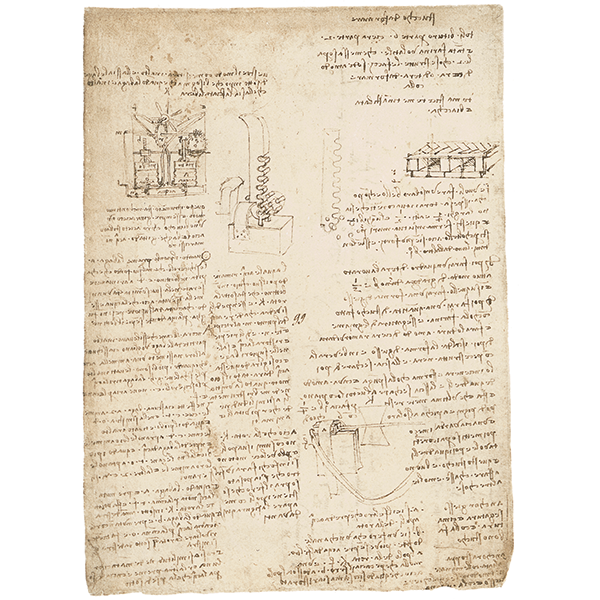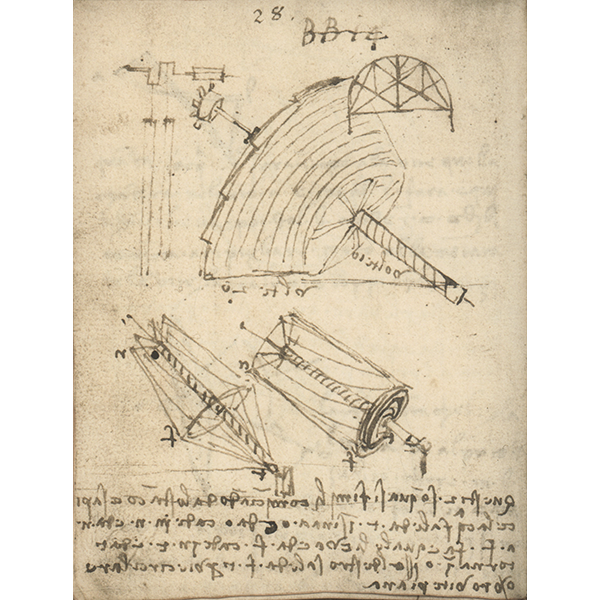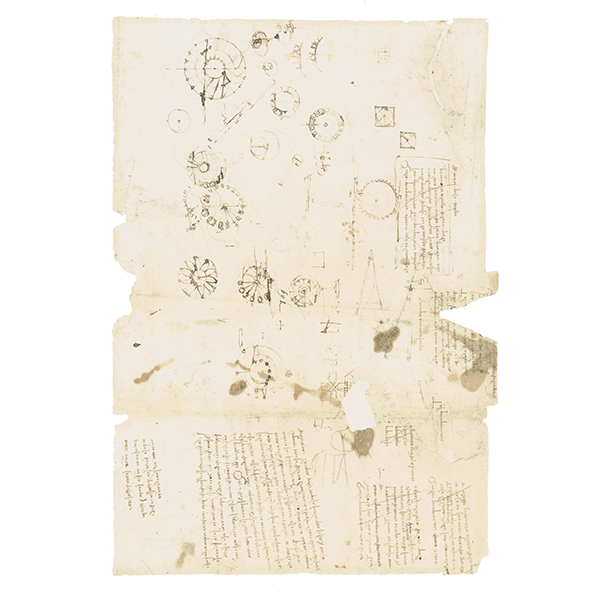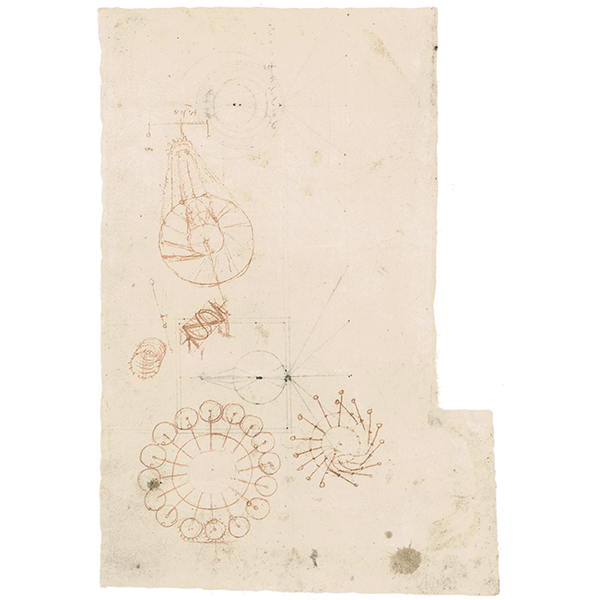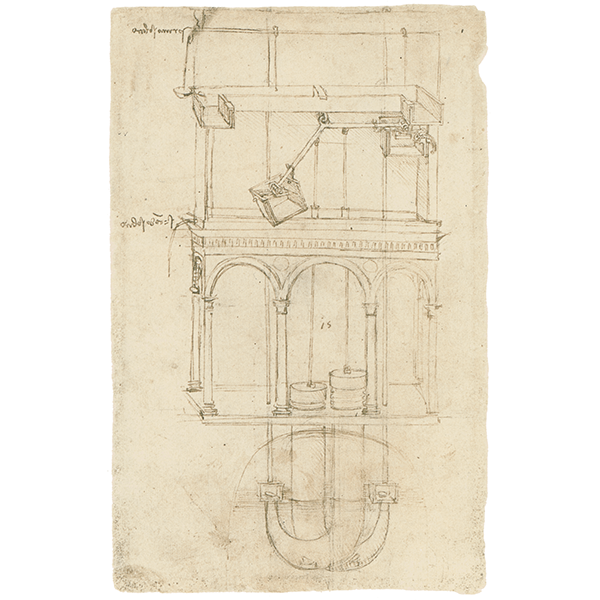Studies on perpetual wheels
In the first half of the 1490s, Leonardo abandoned the notion of recirculation mills and began to study wheels overbalanced by mechanical means (with moving or oscillating spheres) or hydraulic means (systems using Archimedes’ screws to raise and lower water). He designed several versions and probably also built models. However, he concluded his studies by rejecting the possibility of perpetual motion. Identifying gravity and attrition as the forces that made it impossible, he compared perpetual motion to the alchemists’ quest for the transmutation of metals.
Leonardo da Vinci
Milan, Veneranda Biblioteca Ambrosiana, Codex Atlanticus, f. 557v
1487-1490
Leonardo da Vinci
Milan, Veneranda Biblioteca Ambrosiana, Codex Atlanticus, f. 880r
1487-1490
Leonardo da Vinci
London, Victoria & Albert Museum, Codex Forster I, f. 54v
1487-1490
Leonardo da Vinci
Milan, Veneranda Biblioteca Ambrosiana, Codex Atlanticus, f. 473r
1487-1490
Leonardo da Vinci
Milan, Veneranda Biblioteca Ambrosiana, Codex Atlanticus, f. 921v
1490
Leonardo da Vinci
Milan, Veneranda Biblioteca Ambrosiana, Codex Atlanticus, f. 179v
1490-1495


